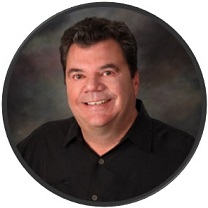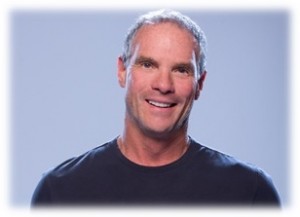Just like the Millennial generation will never know a time when there was no Internet and instantaneous connectivity, some people reading this may be too young to remember the days of “paper adds” – that was when a radio station reported a song to the trades as a favor to the label rep, but didn’t necessarily put it on the air. That was because there were no industry music standard, so ostensibly, no one knew the difference.
As consultants, knowing precisely what music a client radio station is playing – not to mention what’s happening on the competition – is now table stakes. And when a new station signs on in a city a thousand miles away, we have near-instantaneous data about their airplay and rotations.
 Thanks to technology, it’s now easy and accurate to find out which songs a station is playing, how often, and when. But that wasn’t always the case. In this week’s, Radio’s Most Innovative, we recount the story of Rich Meyer, the person who (along with his wife and infant son) gave the radio and record industries their first taste of accurate charts with a service that would eventually come to be known as Mediabase.
Thanks to technology, it’s now easy and accurate to find out which songs a station is playing, how often, and when. But that wasn’t always the case. In this week’s, Radio’s Most Innovative, we recount the story of Rich Meyer, the person who (along with his wife and infant son) gave the radio and record industries their first taste of accurate charts with a service that would eventually come to be known as Mediabase.
Back in the day, imagine sitting around the conference table, as managers conjectured about whether the station across the street was sounding a little harder (or softer or older or newer). Or how their own station had changed since implementing a music test. Or how that hot new station in L.A. that signed on last week was put together musically.
For the radio industry, Mediabase was truly innovative, providing data, information, and reliability that has directly led to making programmers better and smarter. With solid airplay information, broadcasters can strategize and conceptualize, while constantly tracking their own performance, as well as other stations in the market or around the country.
But providing nationwide monitoring is a daunting task, and this innovation got off to a “low-tech” start. To get the full picture of the Mediabase story, we also spoke to Steve Lehman, one of the founding partners of Premiere Radio Networks whose company played a major role in Mediabase becoming what it is today.
JM: Tell us how you came up with the idea for Mediabase?
RM: I’ve been a stats guy my entire life. As a kid, I would pour over baseball box scores and wonder why they didn’t include certain stats. I did the same thing with music. When I was 10 years old, I started creating my own Top 40 charts based on the music I personally enjoyed. I always joke about my dad coming into my room and seeing the charts taped on my wall. He would say things like, “Exactly how are you ever going to make a living making music charts?”
Then, as a programmer I was asked many times (by labels) to “just report the song; you don’t even need to play it.” Obviously, any programmer who did that, even as an innocent favor, was participating in creating inaccurate charts. So, after leaving WMET in Chicago in 1985, my wife Nancy and I came up with the idea of actually taping radio stations and creating a weekly airplay newsletter which we called Mediascan.
JM: How did you get the information back in the early years?
 RM: Each week, Nancy, along with our infant son, would hop a red-eye flight on the old People Express airline. She would roll an entire day of tape in a market on several radio stations flipping a dozen cassettes every hour while watching over an infant at the same time. She would bring the tapes back and I would transcribe them on an IBM Quietwriter 7, trying to make them look as professional and “computerized” as possible. We included everything. Music, spots, promos, liners, stop set lengths…everything.
RM: Each week, Nancy, along with our infant son, would hop a red-eye flight on the old People Express airline. She would roll an entire day of tape in a market on several radio stations flipping a dozen cassettes every hour while watching over an infant at the same time. She would bring the tapes back and I would transcribe them on an IBM Quietwriter 7, trying to make them look as professional and “computerized” as possible. We included everything. Music, spots, promos, liners, stop set lengths…everything.
JM: How did Mediascan evolve into Mediabase?
RM: Nancy and I conjured up the idea of finding investors and actually creating music charts based on multiple markets and hundreds of radio stations weekly. Another huge believer in the whole concept, Mike Solan, introduced us to two independent investors, Richard and Gary Kughn. Richard owned Lionel Trains — which he ultimately sold to Neil Young — along with several other businesses, including WIQB in Ann Arbor.
On January 11, 1988, our new magazine Monday Morning Replay hit the streets. I will never forget the first phone call I received. A thundering voice proclaimed, “Hello Rich, this is Scott Shannon. I work at a little radio station called Z-100 here in New York and I’m going to tell everybody I know that they better support this magazine!” Since Scott already paid for our newsletter, I told him he wouldn’t have to subscribe to Monday Morning Replay for several months. He responded, “Well then, we want two more subscriptions right now. Send me the bill.” That one phone call solidified in our minds that we were embarking on something special.
JM: Explain how the technology worked at that time.
RM: The technology was very primitive in the beginning, but very accurate. We hired “tapers” in the top 35 markets that ran “skim tapes” every Wednesday, beginning at midnight. The tapes recorded for seven seconds every two minutes so one 60-minute cassette contained 24 hours of programming. The tapes were overnighted to our office where our staff of 16 transcribers would spend the next several days reviewing them. I’m proud to say that many of those original employees are still with Mediabase nearly 30 years later. They deserve a great deal of the credit for our success.
JM: How did you go from a magazine to what Mediabase is today?
RM: Unfortunately, Monday Morning Replay hit a snag. I assumed if radio accepted the product, advertising from the record labels would follow. But as the recession hit in the late ’80s, ad dollars dried up and the operation was too expensive to run on subscription fees alone. The model was failing even though the product was very well accepted and established.
So we announced that we were closing effective January 1, 1992. At the time, Mediabase had eight telephone lines and when Nancy and I arrived at the office that Monday morning, they were all ringing. One radio station after another asked what they could do to help. One of those calls came from then WYSP/Philadelphia PD Tim Sabean who suggested a barter model and that I should call Steve Lehman at Premiere Radio Networks.
Editor’s Note: Tim Sabean didn’t just call Rich Meyer. He personally called Steve Lehman (pictured below) to suggest that Premiere explore the idea. We asked Steve to share his recollections of how it came together.
 SL: Tim calls and says every PD is screaming for this information. So I asked him the most important question, “Would you pay barter for it?” and he said, “Absolutely.” I had our clearance department drop everything and call every major market PD and ask the same question.
SL: Tim calls and says every PD is screaming for this information. So I asked him the most important question, “Would you pay barter for it?” and he said, “Absolutely.” I had our clearance department drop everything and call every major market PD and ask the same question.
In two days, I had the answer; multiple programmers in every market said they would support the barter service. So I talked to their investors and bought 51% of the assets for a half-million dollars with rights to purchase the other 49%.
JM: What made the product unique from your standpoint?
SL: Remember at that time (before consolidation) there were lots of owners in every city. No one had ever offered a service that was non-market exclusive before. The fact that we could have multiple affiliates in every market made it the most successful syndicated property ever launched because we had 12 New York affiliates and 10 in Los Angeles. We bought out the remaining 49% of the assets within three months.
JM: How were you able to scale up the operation?
SL: It was profitable year one so we reinvested capital to go from 50 markets to 100 and then 150. We would literally use any location for the skimmer tapes from someone’s apartment to a post office where they had P.O. boxes.
JM: Rich, that brings up a good question. How did you adapt as technology changed?
RM: The advancement of monitoring technology has been fascinating. We still have old Radio Shack cassette recorders with the fast forward buttons almost completely worn down. But honestly, there are no computers that can monitor in the same fashion as humans. There are too many song variations, mashups, mixes, etc.
Don’t get me wrong, technology has come a long way. Philippe Generali and his developers at Media Monitors are on top of their game, constantly refining their cutting-edge software. They do the heavy lifting, and they do it very well. However, it often takes a well-trained human musicologist to make the distinction when questionable audio is in final proofing. That has always been the difference between other technologies, such as BDS, and Mediabase. Since day one there has always been a human element in Mediabase data although now it is primarily a “final proof” to catch any one-offs or exceptions.
One other interesting evolutionary process has been the data delivery process. From a four-color magazine in the ’80s, to a five inch floppy data disc in the early ’90s, to a 3.5 inch data disc in mid ’90s, and ultimately to the Internet in the late ’90s.
SL: It’s important to realize that early adopters of the internet got their data faster which was a big incentive even for people who weren’t comfortable with computers.
JM: How did the advent of BDS affect Mediabase?
RM: It became clear early this century that Mediabase was going to need to turn to automation, just to satisfy the growing demands of our customers. Performance Rights Organizations were interested in abandoning the old reporting methodology for a more exact tracking model and other industry observers were demanding deeper information. In early 2000, Mediabase contracted with Shazam and expanded to more than 1,800 radio stations, all in real time.
JM: What is one suggestion you have for someone with an idea for a new innovation that doesn’t know where to start?
RM: I believe the best ideas are almost always the most obvious. From the very beginning, the entire Mediabase brain trust knew that reliable, accurate song tracking would prevail. None of us knew how long it would take, or even what kinds of obstacles we would face. The one thing we did know for sure; we had a better mousetrap and we were determined to make it work. Anyone who has a sound business idea should keep one thing in mind: the idea should make complete sense conceptually to anyone off the street, not just your peers within the industry. I believe we accomplished that with Mediabase.
Thanks to Mike Stern for writing this week’s “Radio’s Most Innovative.”
INNOVATION QUOTE OF THE WEEK
“It isn’t all over; everything has not been invented; the human adventure is just beginning.”
Gene Roddenberry
More of Radio’s Most Innovative
- Radio’s Most Innovative: KCSN’s Remote Studio and Performance Space
- Best of JacoBLOG – Radio’s Most Innovative: Steven Price/Townsquare Media
- Radio’s Most Innovative: Kurt Hanson
- Radio’s Most Innovative: WNYC Studios, Part 2
- Radio’s Most Innovative: XAPPmedia
- What To Do If Your Radio Station Goes Through A Midlife Crisis - April 25, 2025
- A 2020 Lesson?It Could All Be Gone In A Flash - April 24, 2025
- How AI Can Give Radio Personalities More…PERSONALITY - April 23, 2025





Rich truly is one of the most important innovators in the entertainment field. I’m just glad Tim Sabean and Steve Lehman had the presence of mind to recognize the value of this product to both sides of the radio and records equation. And, especially in this time of reduced or eliminated research budgets, it is one of the most valuable tools in use.
Rich has a great story and we’re glad that more people will get a chance to hear it. Thanks for the comment, Jack.
I came on to Mediabase about three months after start-up and was there till operations were suspended, and was glad to come back for a while when the new investors came in. I respect and admire Rich: I sometimes think back to thosedays and remeber what it was like to know you were in the middle of something that was changing the broadcasting and recording industries. Great times with a great guy, and frindships that have gone on more than 25 years.
Vic, thanks for taking the time to embellish an already great story.
I remember previewing one of the early editions of the MMR Disk with the staff. Impressed by the scrolling message, someone pointed at the bottom of the screen. Somebody else said in loud radio voice that they “loved the scrolling banner”.
Out of nowhere Rich, poked his head into the room and playfully reminded us it was a ‘revolutionary’ scrolling banner.
Rich said he wanted it and the engineers (we called ’em programmers back then) quickly built a light weight, click-able stream or text that could run on an 8086 processor!
Rich didn’t invent the ticker concept but using it as part of the user interface was certainly innovative.
It was a great pleasure (and great fun) to have worked with both Rich and Nancy.
Scott, thanks for the added insights into the MMR innovative process. Appreciate you taking the time.